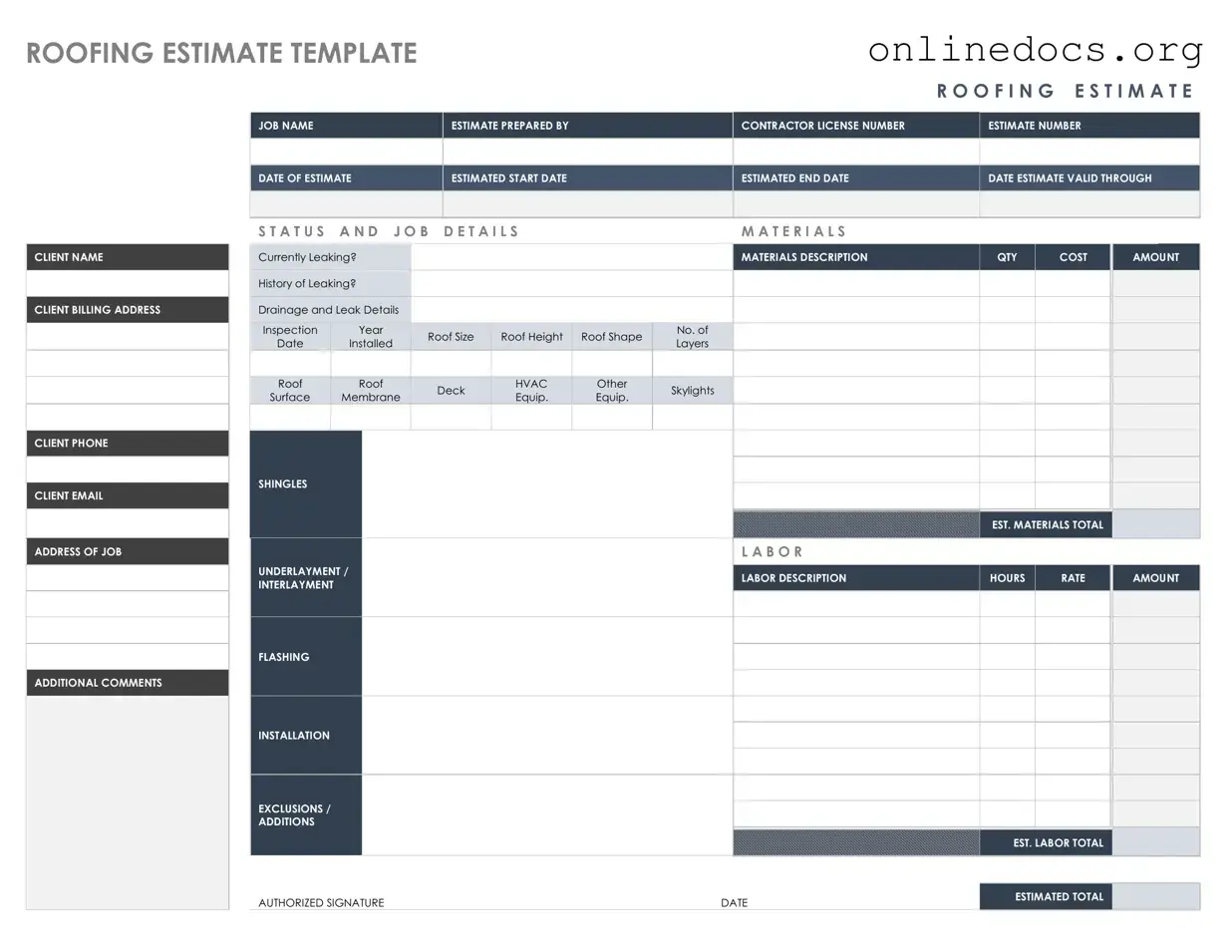Filling out a Roofing Estimate form can be straightforward, but many people make common mistakes that can lead to delays or inaccurate estimates. One frequent error is providing incomplete contact information. If the roofing contractor cannot reach you, they cannot clarify details or provide updates.
Another mistake is failing to specify the type of roofing material desired. Different materials come with varying costs and installation requirements. Without this information, the estimate may not reflect your actual needs.
Some individuals overlook the importance of detailing the size and layout of the roof. Providing accurate measurements is crucial for an accurate estimate. If measurements are not included or are incorrect, the estimate may be significantly off.
Many people neglect to mention existing roof conditions. If there are leaks, damage, or structural issues, these factors can affect the estimate. Be honest and thorough about the current state of your roof.
Another common mistake is not indicating any specific features such as skylights, chimneys, or vents. These features can impact the complexity of the job and, consequently, the cost. Ensure that all unique aspects of your roof are noted.
Some individuals rush through the form and fail to read the instructions carefully. Each section of the form has specific requirements. Skipping steps or misinterpreting questions can lead to confusion and errors in the estimate.
Additionally, people often forget to include their budget or any financial constraints. This information can help contractors tailor their estimates to fit your financial situation, potentially saving you time and frustration.
Another mistake is not asking questions if something is unclear. If you don’t understand a section of the form, seek clarification. Leaving questions unanswered can lead to assumptions that may not align with your expectations.
Some individuals may also ignore deadlines for submitting the form. Delays in submission can push back the timeline for receiving an estimate and starting the project. Be mindful of any timelines provided by the contractor.
Lastly, many people forget to review the form before submission. A final check can catch errors or omissions that could affect the estimate. Take a moment to ensure everything is accurate and complete before sending it off.
